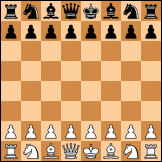For some reason I made the assumption that a piece which is pinned is attacked by the pinning piece.
This turned out to be true most of the times but there is also some edge case like this:
[d]2b5/8/8/8/R5pk/8/5P2/1K6 w - - 0 1
After 1.f4
[d]2b5/8/8/8/R4Ppk/8/8/1K6 b - f3 0 1
black cannot play gxf3e.p. because the black king would be attacked by the white rook.
That means that g4 is (kind of) pinned.
Wikipedia https://en.wikipedia.org/wiki/Pin_(chess) writes:
"In chess, a pin is a tactic in which a defending piece cannot move out of an attacking piece's line of attack without exposing a more valuable defending piece."
But in this case the (partially) pinned pawn on g4 CAN move to g3
and it is not directly attacked by the rook on a4.
Wikipedia mentions a different case of a partial pin where e.g. a pinned rook can move
in the direction of a pinning rook.
Maybe for this rare en passant case of a pin a second partial pin has to be introduced (?).
Anyways I thought this to be an curiosity
